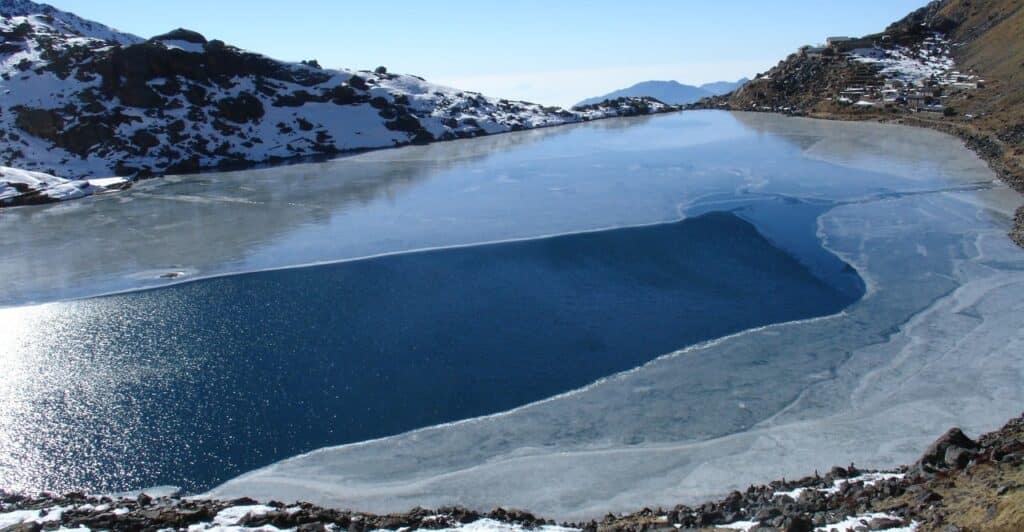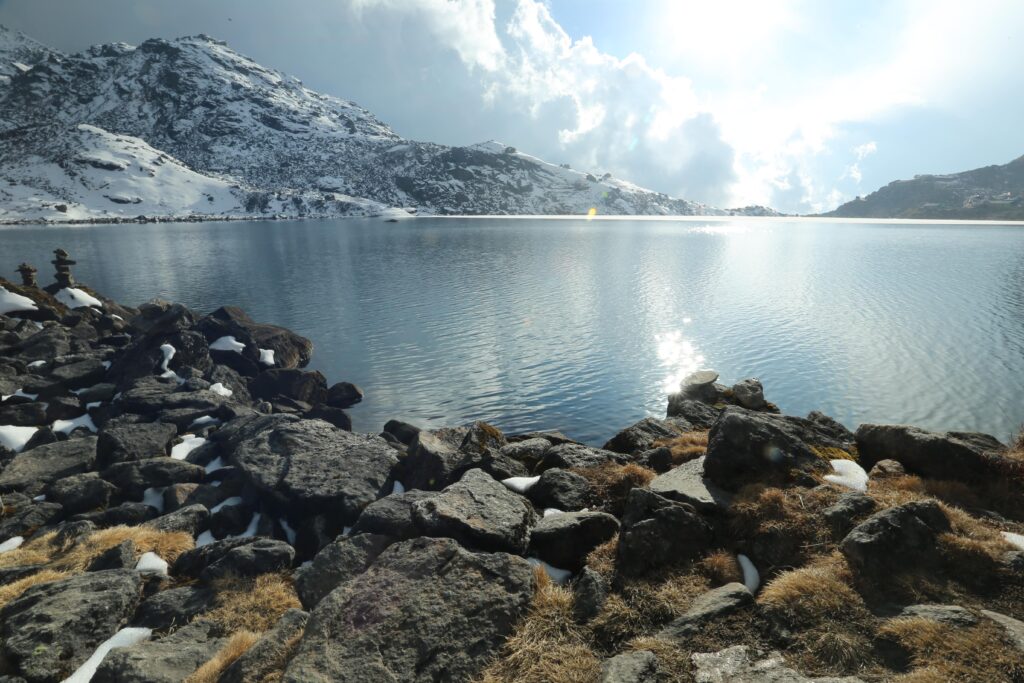Inquiry +977-01 4116611, 9851116322 info@aarohiholiday.com



Langtang Gosaikunda Trek
Trip Days
15 days
Max Height
5000m
Difficulty
Hard
Starting Price
$ 1150
Langtang Gosaikunda Trek at an altitude of 4600 m may be a very famous Holy lake for the Hindu and Buddhist. During this Langtang Gosaikunda Trek, there are stuffed with beautiful scenery with a forest of oak, Rhododendron, and pine slotted between ancient settlements Langtang Gosaikunda Trek is additionally called the gorge of glaciers with the natural and traditional at a beauty, the boon for locals and travelers. Langtang Gosaikunda Lake lies at the peak of 4 thousand meters above the ocean level. On Langtang Gosaikunda Trek, we will observe an outsized number of ethnic communities, the foremost inhabitants of Tamang, Gurung, Sherpa, and other tribes. Both Hindu and Buddhists make the pilgrimage to wash in Gosaikunda during the festival of Janay Purnima. On Langtang Gosaikunda Lauribina pass Trek, we will provide you the change to enjoy the eye-catching view of the hidden valley and awesome Himalayan vistas, and therefore the snow-covered mountains like Langtang Lirung, Langtang-Ri, Ganesh Himal, Langsisa Ri and far more.
We began our 15 days trip in Kathmandu with visits to UNESCO world heritage sites before heading to the foremost popular trails in Nepal Himalaya is Langtang Gosaikunda Lake routs.
Aarohi Holiday will make your trip fantastic and a lifetime experience on Langtang Gosaikunda Lauribina pass Trek.
Day 1: Arrival in Kathmandu (1,350m) at the Tribhuwan International Airport (TIA)
Upon your arrival at Tribhuvan International Airport, we offer you pick up facility from the airport and manage your stay at the most comfortable hotel in the city. You get to meet the team of trekkers and together we prepare for the trek.
Day 2: Sightseeing around Kathmandu valley (1,350m)
Today would be the most exhilarating day where you will be introduced to the most pious Hindu and Buddhist religious place that is listed in the UNESCO World Heritage sites and elucidates you to the entire mysticism over its existence Pashupatinath temple, Boudhanath stupa, Patan Durbar Square, and Swayambhunath stupa.
Day 3: Kathmandu to Syabrubesi (1,400m)
We leave Kathmandu in the morning for Syabrubesi, a village that is also the starting point for treks into the Langtang valley. Our journey will be on a winding road through frequent switchbacks. On a clear day, we get to enjoy outstanding views of Manaslu, Annapurna, and Ganesh Himal. Our trek for today ends with a descent into the small village of Syabrubesi.
Day 4: Syabrubasi to Lama Hotel (2,430m)
We begin our trek to Syabrubesi along the Langtang Khola. We move upward and downward simultaneously through oak and rhododendron forests. After crossing a bridge over the Langtang Khola (tiny river), we ascend on a steep trail which will lead us to the Lama Hotel.
Day 5: Lama Hotel to Langtang Village (3,375m)
We continue ascending from Lama Hotel and enjoy the mountain landscape with abundant waterfalls. As we reach the green meadows of Ghoda Tabela, we begin to see the white peaks of the Langtang range. Our trail continues to climb up the widening valley, passing a few temporary settlements used by herders. We pass by a Buddhist monastery before reaching the Langtang village which was affected by the April 2015 earthquake.
Day 6: Langtang to Kyanjing Gompa (3,750m)
We will start our journey to Kyangjin Gompa, a principal monastery of the region. We go through water mills, prayer wheels, Chortens, with sacred mounds of rocks with inscriptions carved on them. We also pass by the largest mani wall in Nepal, made from stone with prayers written on them. After the short trek, we explore the Buddhist shrine in Kyangjin Gompa and surrounding areas with the amazing views of the mountains.
Day 7: Kyanjing Gompa to Godatabala Via Kyanjing-Ri (5,150m)
We spend the whole day exploring Tserko Ri which will also help us acclimatize to the high altitude. We begin early in the morning. The trek passes through yak pastures before ascending to Tserko Ri. The sunrise view from the top of Tserko Ri is extraordinary. We get to explore the beautiful monastery while enjoying views of the Himalayas, glaciers, birds, and yaks.
Day 8: Godatabela to Thulo Syapru (2,210m)
Today after breakfast we will see the people of Langtang and struggle in this valley centuries and centuries with natural disaster with ancient Tibetan Buddhist practice stands so proudly as an example. There depend on a cow, sheep, yaks, Horse and Mountain combined life so extra to see in Bhotia culture. After that, we will start our trip down to see another influence to an ethnic group of Tamang down in the Langtang valley. Overnight at Thulo Syapru.
Day 9: Thulo Syabru to Sing Gompa (3,000m)
On our way to Shin Gomba, we will first come across a village called Dimsa. The trail further continues less steeply, through rhododendron, hemlock and Oak forests to Shin Gomba. Along the journey, we will catch a wonderful glimpse of Langtang Himala and Langtang valley.
Day 10: Sing Gompa to Gosainkunda (4,300m)
The trail initially passes through an area entirely dominated by rhododendron and then through a forested area. The area in-between Shin Gomba and Laurebina Yak is a sanctuary for the red panda, an endangered species that the Nepalese call cat bear. We will then climb a wider route through alpine country to arrive at a Gosainkunda. We will explore the Lake region.
Day 11: Gosainkunda to Ghopte (3,450m) via Lauribinala Pass (4,616m)
The route towards Gopte ascends uphill and through moraines. After passing three other small lakes, we will further ascend and cross Laurebina La (4,609m/15,121ft). The path then goes downhill to Phedi. Continue to walk up and down throughout crossing a rocky hill with pine, rhododendron trees.
Day 12: Ghopte to Kuttumsang (2,600m)
Today the day continues ups and down through the forest and walking on a ridge of a Hill. We can also have a good view of Tadhi valley and Helambu and cross a Thadropati pass 3690m and the trails continue via the dense forest to manage growth from where the view of Langtang range and the Gosaikunda peak is dramatic. After that, we will reach Kutumsang(2470m). Overnight at Kutumsang Lodge.
Day 13: Kuttumsang to Chisopani (2,250m)
Today trek continues with downhill to Gul Bhanjyang(2130m) and Pati Bhanjyang (1830m) crossing through an ethnic group of Tamang and Sherpa people of their culture and old villages. After the Tharapati Bhanjyan trail leads up to Chisapani 2215m from where the awesome View of Ganesh Himal range, Langtang Range. Overnight at Chisopani.
Day 14: Chisapani to Kathmandu via Sundarijal (1,400m)
Today we will trek up to Borlang Bhanjyan 2430m and all the down through Tamang village with the land field, dense forest, and Shivapuri national park and then down to Sundari Jal. After that, we will catch the private car and back to Kathmandu and drop to your Hotel. Rest of time we can go to the shop to buy some gifts and memories of our country for your family and friends. There will be a farewell dinner (Nepali Food) to celebrate the successful completion of our journey. Overnight in Kathmandu.
Day 15: Final Departure
Your wonderful adventure in Nepal comes to an end today. We wish you all the best. A representative from Aarohi Holiday Pvt Ltd will take you to the airport approximately 3 hours before your scheduled flight.
What's included ?
Pick up and drop off from and to International airport.
3 night hotel in Kathmandu (first two nights and last one night)
Langtang National park Permit
TIMS Card (Trekking’s Informational Mangagment System)
One porter for each two people
Accommodation in tea houses twin sharing (private room/ Shared bathroom)
3 Meals a day – breakfast, lunch, Dinner during the trek (Anything from the munu)
All land transportation
Sightseeing tour car A/C with driver.
Farewell dinner at Nepalese cultural restaurant after the trek in Kathmandu.
All taxes and Company service charges
